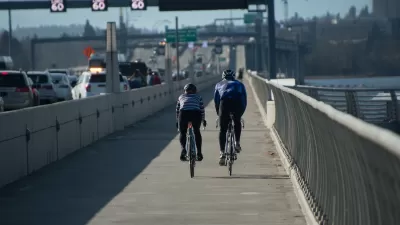The editorial board of The Urbanist lays out their plan for a reimagined Third Avenue that plays to the strengths of the corridor while improving safety and transit service.

The Urbanist’s editorial board speaks out in favor of a bold and actionable plan for Seattle’s Third Avenue, one of the busiest transit corridors in the country but “a place where many a plan goes to die.”
At The Urbanist, we believe the Third Avenue plan must focus on improving transit service and pedestrian safety. Some sections have great opportunities for street art, pocket parks, and sidewalk cafes. If we make the street more walkable and the bus stops pleasant, safe, and busy, then street life will follow.
The board writes that the plan “should also recognize and promote the unique strengths and needs along each of the distinct sections of the street,” and recommends treating each of the street’s four segments separately, using street design to enhance each neighborhood’s existing assets.
The board also calls on the city to invest in ways to help people facing mental health and substance abuse crises, citing the rise of mental health issues and opioid use during the pandemic, which, in addition to harming users, has also led to an increasingly negative public perception of Third Avenue and, more broadly, the city’s public transit.
According to the board, “Policymakers must acknowledge that Third Avenue is going to continue to be a transit workhorse, but it can be walkable and loaded with street activation, too.” Cautioning against more lofty but unattainable plans, the board writes, “But what we need isn’t another big dreamy visioning exercise that goes nowhere or settles on a small incremental change. There are actions and investments that could be made that would produce real results.”
FULL STORY: An Urbanist Vision for Seattle’s Third Avenue

Alabama: Trump Terminates Settlements for Black Communities Harmed By Raw Sewage
Trump deemed the landmark civil rights agreement “illegal DEI and environmental justice policy.”

Planetizen Federal Action Tracker
A weekly monitor of how Trump’s orders and actions are impacting planners and planning in America.

The 120 Year Old Tiny Home Villages That Sheltered San Francisco’s Earthquake Refugees
More than a century ago, San Francisco mobilized to house thousands of residents displaced by the 1906 earthquake. Could their strategy offer a model for the present?

Ken Jennings Launches Transit Web Series
The Jeopardy champ wants you to ride public transit.

BLM To Rescind Public Lands Rule
The change will downgrade conservation, once again putting federal land at risk for mining and other extractive uses.

Indy Neighborhood Group Builds Temporary Multi-Use Path
Community members, aided in part by funding from the city, repurposed a vehicle lane to create a protected bike and pedestrian path for the summer season.
Urban Design for Planners 1: Software Tools
This six-course series explores essential urban design concepts using open source software and equips planners with the tools they need to participate fully in the urban design process.
Planning for Universal Design
Learn the tools for implementing Universal Design in planning regulations.
Clanton & Associates, Inc.
Jessamine County Fiscal Court
Institute for Housing and Urban Development Studies (IHS)
City of Grandview
Harvard GSD Executive Education
Toledo-Lucas County Plan Commissions
Salt Lake City
NYU Wagner Graduate School of Public Service





























